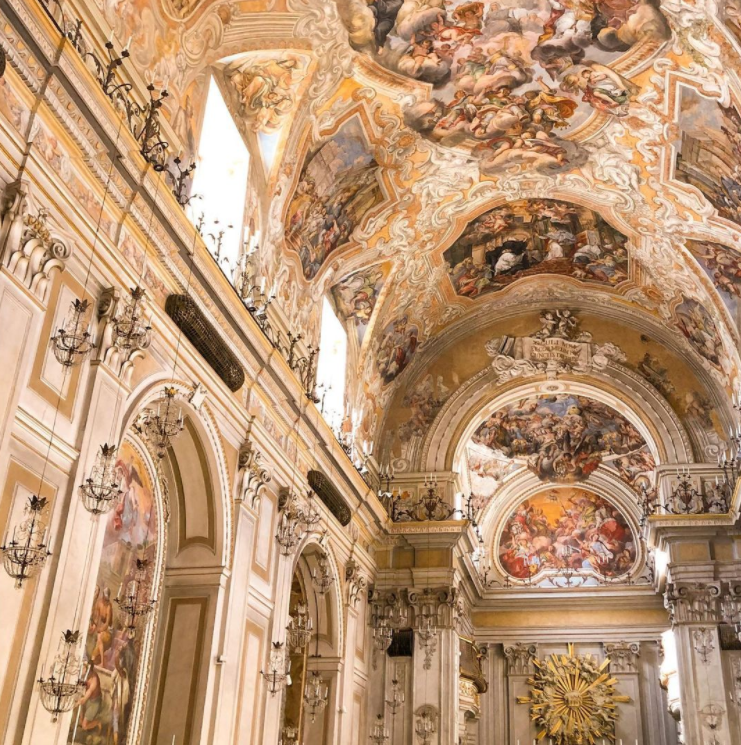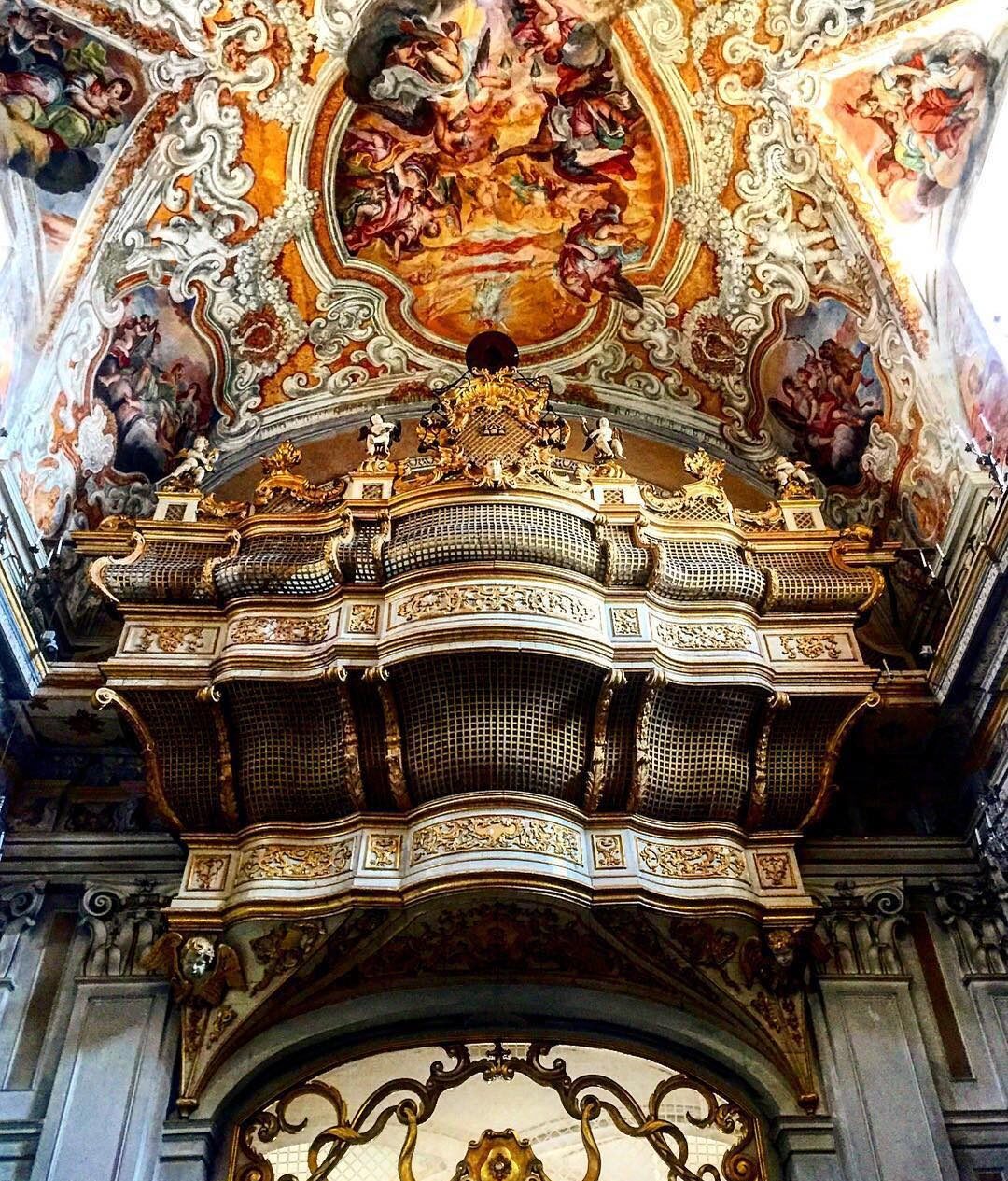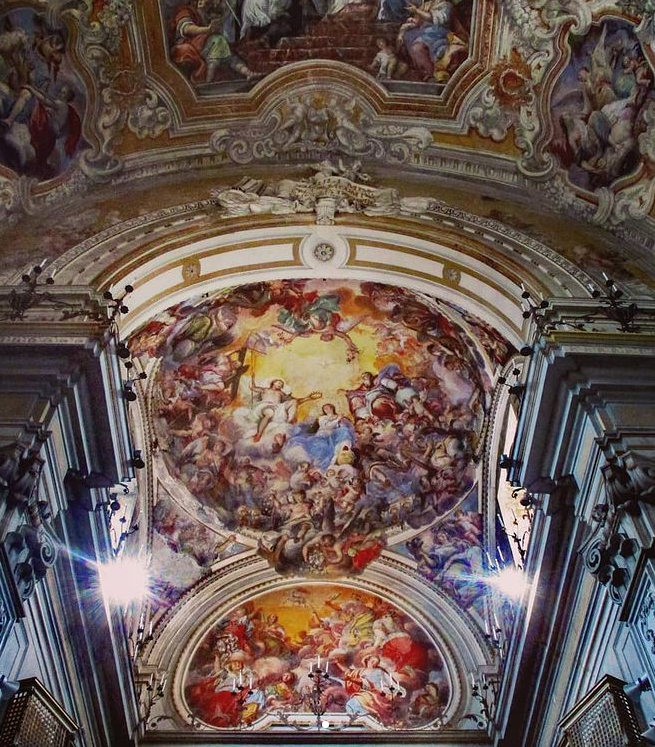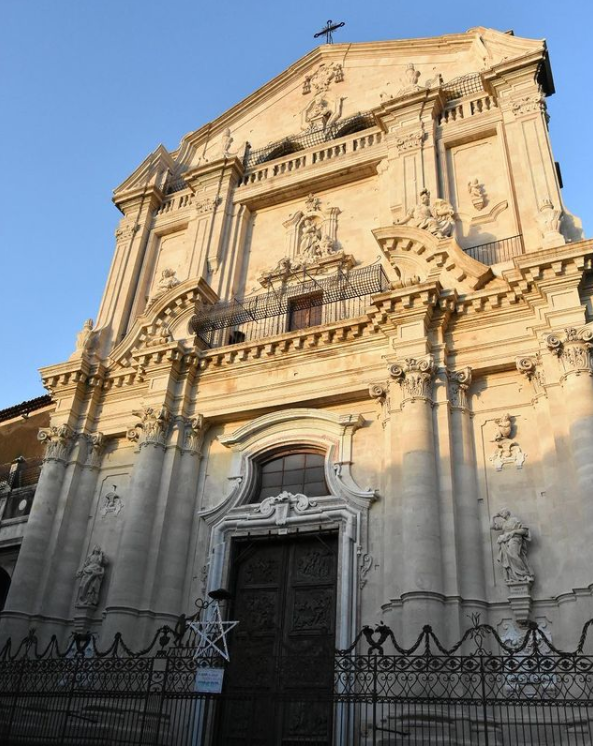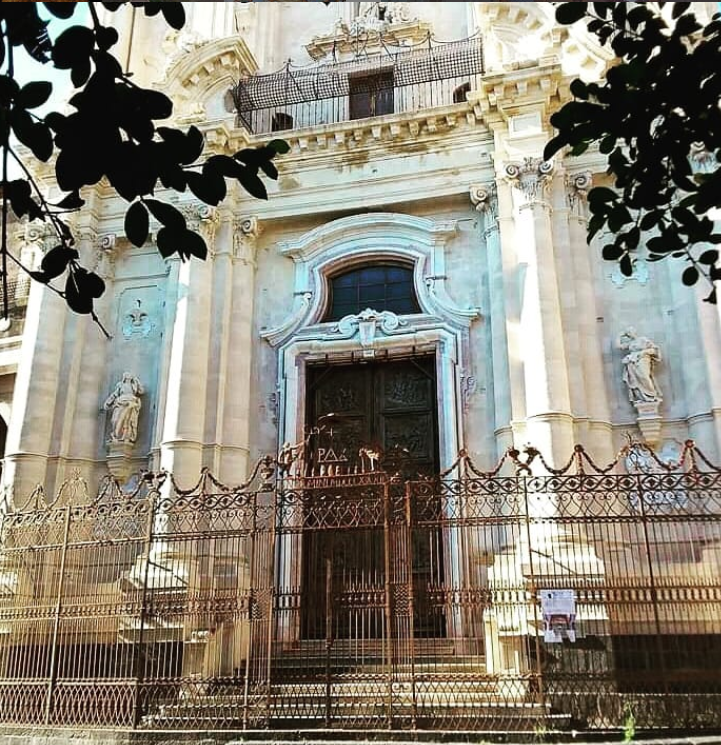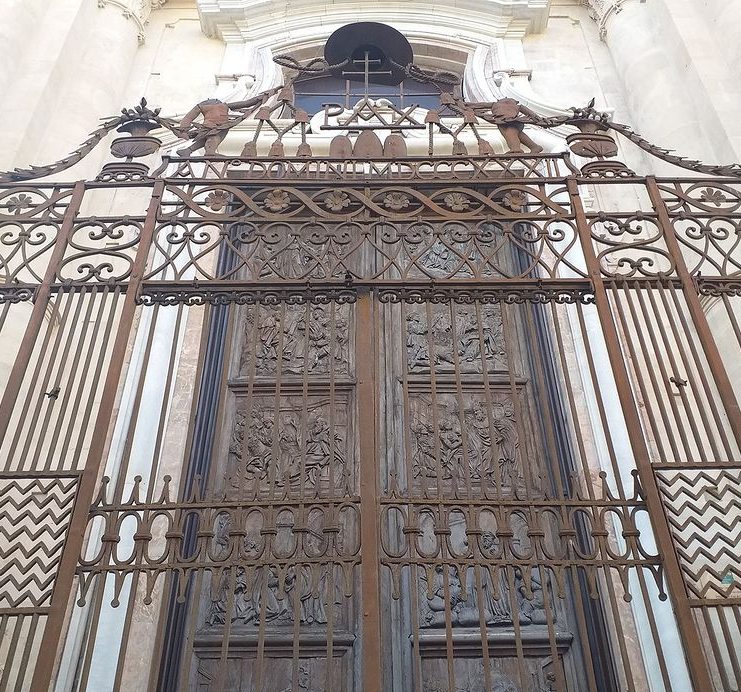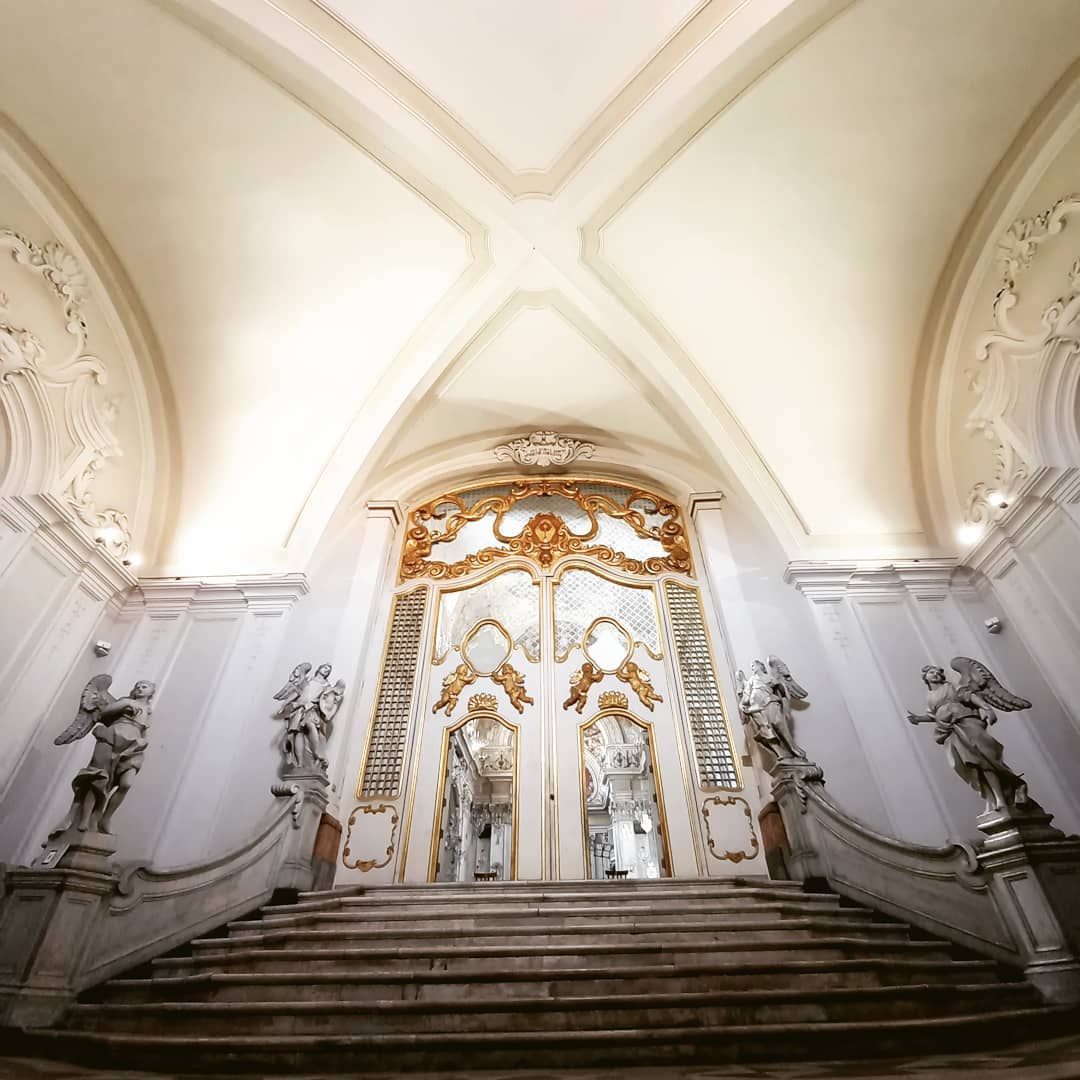Church of San Benedetto
The Church of San Benedetto is a masterpiece of Baroque architecture that lies right next to the Museum of Contemporary Art of Catania. The structure is famous above all for Angel’s staircase, a marble entrance staircase, adorned with statues depicting angels.
The staircase is surrounded by a beautifully wrought iron gate. The wooden entrance door is filled with scenes from the life of St. Benedict. The church is part of the convent complex of the Benedictine nuns which also includes the main abbey and the minor abbey connected by a covered bridge that crosses via dei Crociferi.
Inside, there are frescoes by Sebastiano Lo Monaco, Giovanni Tuccari, and Matteo Desiderato. The church has one nave and the vault is completely frescoed with scenes from the life of St. Benedict.
The main altar is made of polychrome marble with inlays of semiprecious stones and Sicilian jasper, bronze tiles, silver sheets, gold patinated inserts that are dominated by the immolated and sunburst Lamb of God in the center of the sacred book closed with the seven seals. The silver panels of the altar, attributed to Giovanni Petrosino from 1789, depict the Last Supper alternating with two medallions.
In the center, the silver door of the tabernacle depicts King David playing the lyre, the artifact is surmounted by an elaborate crowned temple. In the First arch of the right nave, we see a painting depicting the Immaculate Conception, by Sebastiano Lo Monaco. On the Second arch, there are the remains of a fresco depicting the Martyrdom of San Placido. On the third arch a painting depicting King Totila prostrating himself before San Benedetto, by Michele Rapisardi.
On the left nave of the first arch, is a painting depicting Tobiolo and the angel, oil on canvas, by Matteo Desiderato made in 1780. Second arch. Painting depicting the Martyrdom of Sant’Agata by an unknown artist, dating back to 1726. Third arch: Altar of the Most Holy Crucifix. On the wall, the Crucifix attributed to Giulio Gallo from 1685. The figures of Calvary reproduced on the wall in the 18th century were covered with a mixture of marble. More
